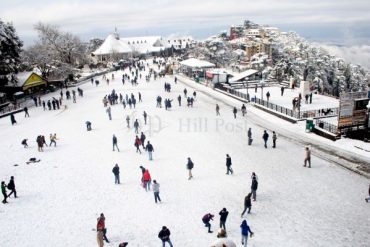Shimla: Erosion caused by successive flash floods in Satluj valley washed away Sunil Verma’s marginal farm holding at Noghli village near Rampur, rendering him landless. Pushed onto the fringes of society, he makes a livelihood by working as a daily wage labourer involved in road construction activity.
Near Una, in the Swan river catchments, soil around a well has eroded so much that the wells brick structure surviving the annual floods lies exposed 25 feet above the flow levels.
In Kullu valley, frequent cloud bursts have washed away hundreds of acres of orchard and farm lands.
The issue found echo in the budget session of the Vidhan Sabha and lawmaker Surinder Bhardwaj moved a private members bill seeking the governments attention is starting a pilot project to check damage to fertile soils.
Responding to the members concern, chief minister Prem Kumar Dhumal stated that it was estimated that due to different causes about 240 lakh tons of fertile soils was being eroded each year.
A National Bureau of Soil Survey study on ‘Soils of Himachal Pradesh: Land capability classification and assessment of soil degradation status for suggested land use’ established that only 21.4 percent of states land area was moderately and marginally suitable for growing climatically adopted crops
In a 1 to 8 classification of land quality, 78.3 percent of the area was considered as class 6, 7or 8 and not suited for agriculture. The study also found that about 53.8% area of the state is affected by water erosion.
HP Horticulture University, Solan, in a separate study ‘Erodibility Status of Soils under Different Landuses in Shiwalik Hills of Himachal Pradesh’ recommended that ‘marginal lands such as barren and scrub lands in Shiwalik hills need special management practices for soil and water conservation to check further degradation.
More effective soil and water resource conserving systems like agro-forestry, agri-horticulture, silvi-pasture, controlled and rotational grazing and enclosure of degraded sites for natural regeneration needs to be done, say JC Sharma and Vipin Kumar in the paper.
Waking up to the reality, chief minister Dhumal in the house proposed to look at setting up separate soil erosion department by pulling together funds from agriculture, rural development, forest and irrigation and public health departments.
Landslide and erosion are increasing due to nature and man-made reasons, disturbing the delicate ecology and environment, he said. About 78 percent of the population in the state sustains on agriculture or horticulture.
Impact on 34 per cent soil is so immense that it is on the verge of losing its fertility. Last year rains alone damaged Rs 2000 crore worth of farmland and infrastructure, said Dhumal.
Parted from his land Sunil Verma laments, “Reduced from a landlord to a landless labourer, the Devta’s (Hill God’s) are surely angry with us.”
As Editor, Ravinder Makhaik leads the team of media professionals at Hill Post.
In a career spanning over two decades through all formats of journalism in Electronic, Print and Online Media, he brings with him enough experience to steer this platform. He lives in Shimla.



